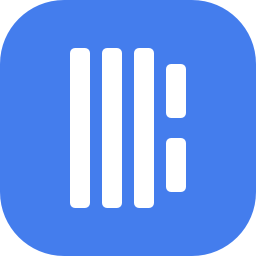On the morning of December 14, according to Atomics Market data, the mainstream ARC-20 token in the Atomics Protocol ecosystem experienced a general rise.
Among them, DMINT is quoted at US$0.12, with a 24-hour increase of 196.3%; BITVM is quoted at US$0.03, with a 24-hour increase of 47.73%; REALM is quoted at US$0.72, with a 24-hour increase of 53.41%; AVM is quoted at US$0.2, with a 24-hour increase of 48.9%; ATOM The price was quoted at US$10.49, with a 24-hour increase of 10.26%.
Among these tokens, the price of ATOM exceeded $13 yesterday, also hitting a record high.

It is worth noting that behind the general rise of mainstream ARC-20 tokens, Atomics Protocol’s frequent ecological updates in the past week, as well as the rare appearance of the founder yesterday afternoon, have become one of the driving forces behind the general rise of its mainstream tokens.
Founder Arthur makes rare appearance
Yesterday afternoon, Arthur, the founder of Atomics Protocol, accepted an interview invitation from the Ordinal Revolution Podcast and shared the recent developments of Atomics Protocol and his views on the Bitcoin ecosystem in the interview room without showing his face.

interview roomscreenshot
In the interview, Arthur pointed out that when the DMINT functionality was first built, not many people paid attention. The Atomics Protocol was originally built for the Realm system, a project that aims to revolutionize online identity and naming issues. However, the protocols versatility allows it to be used in any type of computer program, making it ideal for dynamic systems.
Arthur said developers are ready to build a decentralized ID platform on Realms, allowing users to attach their avatars, names and links to their online profiles.
At the same time, he also explained the trading rules of Subrealms and DMINT in detail, telling the community that the basic work has been done for others to continue to develop.
In addition, Arthur also expressed his views on meta protocols in the interview. He believes that meta protocols are a new way for developers to create their own data structures and rules instead of using existing strict structures. Meta-protocols like the Atomics Protocol are emerging to enable developers to leverage smart contracts and create new structures.
Creators can focus on the Atomics Virtual Machine (AVM), which will enable developers to create smart contract programs on Bitcoin and create unprecedented experiences.
Atomics Protocol new rules: support for small transactions
In addition, Atomics Protocol has frequently released new regulations in the past week, which also makes the community have higher expectations for it.
On December 7, Atomics Protocol proposed an innovative splitting plan for ARC-20 tokens in official documents, aiming to solve the dust limit problem existing in the Bitcoin network. In the Bitcoin network, the minimum unit of a single UTXO transmission is 546 satoshis, which limits the application of ARC-20 tokens in small transactions.

Image source: Atomics ProtocolOfficial documentation
The solution proposed by Atomics Protocol overcomes this limitation by introducing the Substantiation Factor (SF), which redefines the number of satoshis required to support a single ARC-20 token. The core of the scheme is to allow token holders to convert their token units from 1:1 to smaller ratios such as 1:10, 1:100, etc., effectively splitting or subdividing their tokens. Token units to arbitrary precision.
It is worth noting that performing this operation requires a corresponding provision of regular satoshis as collateral for token units. By default, ARC-20 operates with 0 decimal places, a 1:1 materialization. By changing the exponent to obtain decimal places, rescaling or resubstantialization of different proportions can be achieved.
For example, to trade 1 token unit while respecting the dust limit, just materialize each token unit with 1,000 satoshis and then perform a transfer of 1,000 satoshis with an index of 3. This solution not only maintains the fungibility and liquidity of ARC-20 tokens, but also greatly improves the flexibility and accuracy of transactions.
Realm rules update: Users can mint Subrealms using ARC-20 token payment
On December 12, Atomics Protocol released the trading rules for Subrealms and DMINT, allowing Realm owners to mint Subrealms through bitwork or ARC-20 token payments, helping users easily create advanced rules and payments in real time as a way to claim Subrealms and DMINT NFT items. conditions of.

Realm is Bitcoins native name system. Everyone can register freely. Each name is an NFT token and will always belong to the user unless the user chooses to give or sell it. The Realm Name System (RNS) “aims to be the global replacement for DNS and all other blockchain naming systems.”
Subrealms are the names that come after the domain name, separated by dots, and represent subcategories or products in the organizations identity hierarchy. Subrealms can be used to display NFT collections or other assets within Realm. Subrealms can be owned by individuals and sold to others, or issued as individual tokens within the Bitcoin blockchain.
The update also means DMINT NFTs can be paid for using ARC-20 tokens. A community member pointed out that Atomics Protocol’s series of updates accurately captured “the needs and excitement of the community.”










